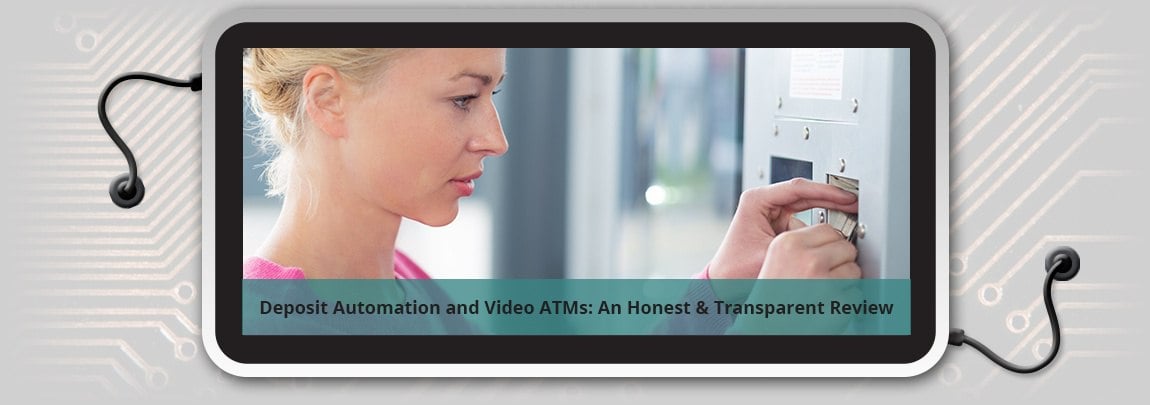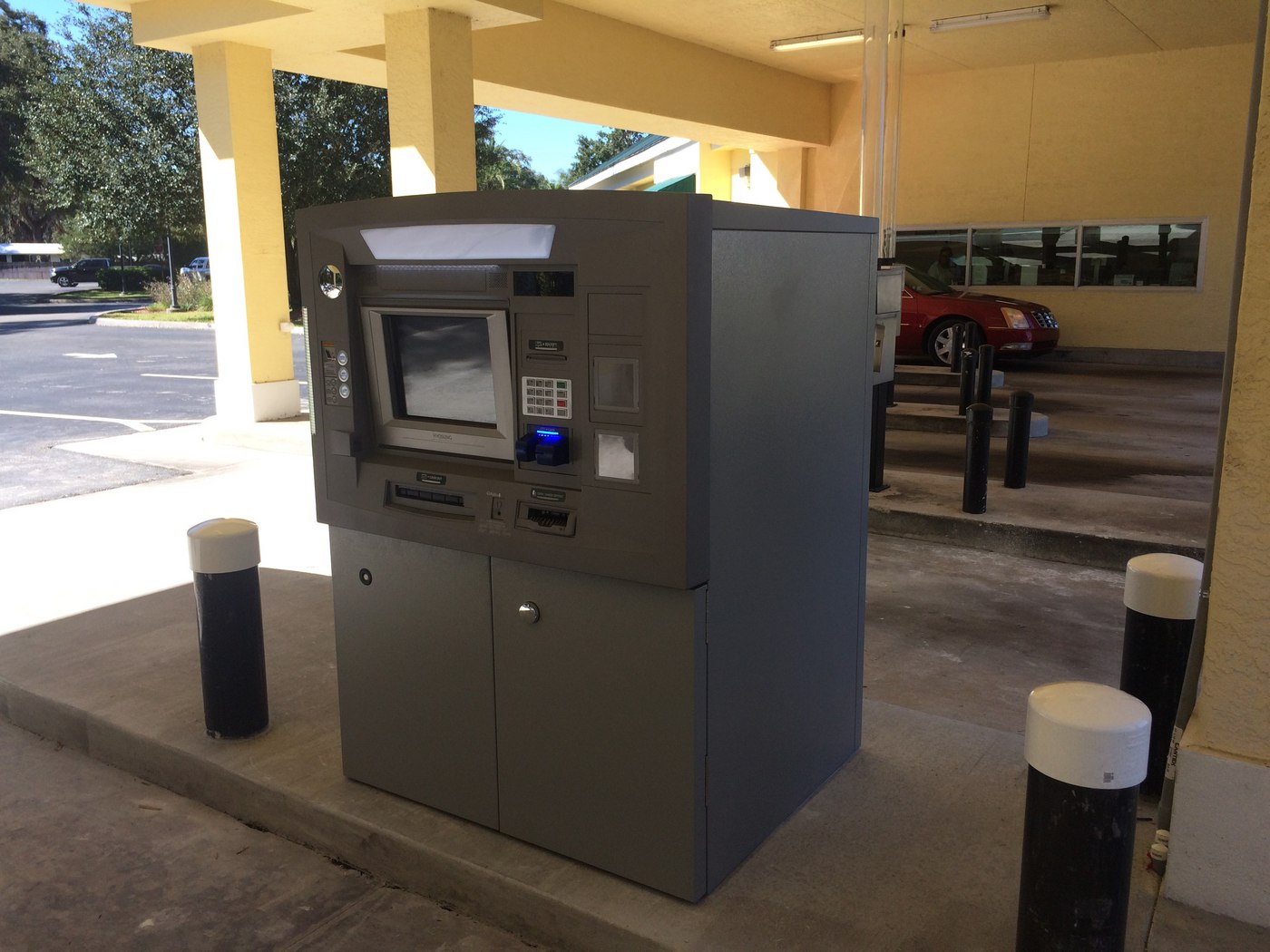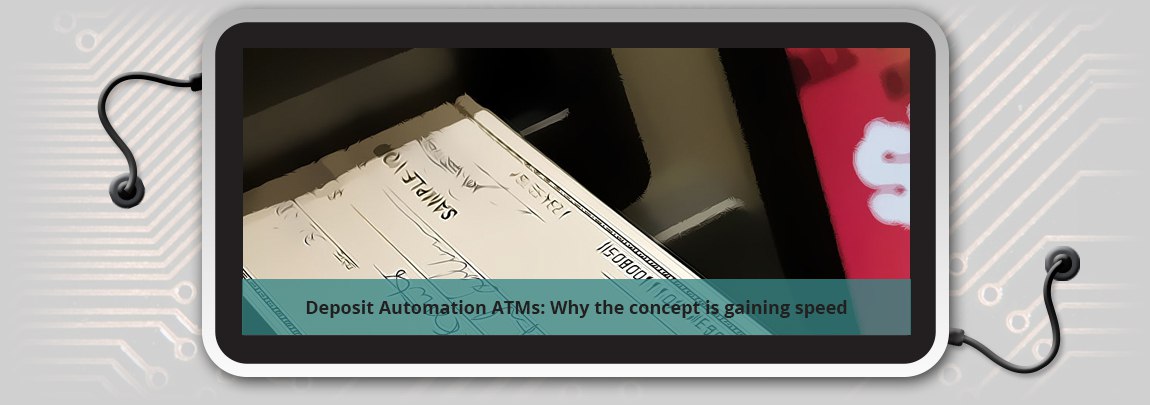3 Things to Consider When Buying (or Replacing) an ATM
Your branch or drive up ATM is past its prime and needs replacing. Or, you are building a new branch or establishing a presence in a new market and...
4 min read
 Sean Farrell
:
Sep 30, 2015 7:30:00 AM
Sean Farrell
:
Sep 30, 2015 7:30:00 AM


Technology has revolutionized the banking industry, leaving financial institutions wondering which advancements make sense for their unique needs. And over our 32 years of being in business, we often get asked, “Which would you recommend?” when a financial institution is trying to choose between two products. Often, the answer isn’t clear-cut.
“It depends,” we say. “It depends on your goals, what problem you’re trying to solve, your customers’ behavior, your budget…” And the list goes on. This answer also holds true for this pressing question: between deposit automation and video ATMs, which is better?
It depends. Are you looking to streamline operations? Add a personal touch to the banking experience? Or a little bit of both? Let’s take a look at the pros and cons of both technologies to arm you with the information you need to make the best decision for your business.
First, a quick background on deposit automation. A few short years ago, consumers weren’t able to make deposits at ATMs at all. When financial institutions began accepting deposits at ATMs, it was a clunky experience for consumers and still required some additional manpower on the business side (keeping envelopes stocked, collecting checks, etc.). Today, due to some landmark legislation, deposit automation is even more streamlined than before. Consumers can deposit checks directly into the machine (no envelopes required), and the deposit hits their account nearly immediately. This legislation also made remote deposit and mobile deposit a possibility. With the average cost of a teller deposit now over $4.00 per transaction, the typical cost of a deposit automation transaction averages just $.50 per transaction!
Consumer convenience. Thanks to deposit automation, consumers no longer need to interact with a teller to deposit money into their account (although remember, some customers prefer the personal touch of engaging with a bank teller). A customer can deposit checks or cash into his or her account, expending only the effort required to roll down the car window. Anything that makes life easier on the consumer is good for your business!
Cost efficiency. An ATM with deposit automation may cost in the $45,000 to $55,000 range, but that’s a fraction of what it would cost to handle the same transaction at a brick-and-mortar store and a teller. Bonus: the convenience factor would likely increase the number of customers and deposits, resulting in higher revenue while cutting operational costs.
Extended hours of operation. Most traditional jobs require employees to be at the office between 9 and 5 PM. Do those hours sound familiar? It’s exceedingly difficult for workers to take long lunch breaks or find time during the work day to hit the bank – and those long Saturday morning lines at the teller windows won’t make your customers happy, I promise you that. Deposit automation at the ATM allows your customers to deposit checks or cash before or after traditional work hours, although there is typically a cut-off time for deposits (8 PM is standard).
Cons:
Limited deposit amounts. Deposit automation ATMs restrict the number of checks (usually 15 but up to 50) and bills (usually up to 50) that a single customer can deposit into the machine. Those limits are typically plenty for the average Joe, but may not be enough for small businesses.
Technology malfunctions. It doesn’t happen often, but it happens. Imagine running to the ATM to deposit your recent paycheck, entering it into the slot, and … the machine gets it wrong. The amount is significantly lower than it should be. Or, on the flipside, you deposit 12 bills, but one is in poor condition and the machine refuses it. What then? That brings me to the next point…
Lack of human support. The biggest drawback to deposit ATMs is that, no matter how automated and efficient technology has become, sometimes customers still need to speak to another human being. Have you ever called a customer support number only to speak to a computerized robot who directs you to press buttons? It’s frustrating and time-consuming. If something goes wrong at the ATM, you want your customers to have the real, personal support they need to keep them satisfied and coming back.
Video ATMs, like the Teller Assist machines rolled out by Bank of America, allow your customers to leverage the convenience of an ATM with the personal experience of a live bank teller – all at the same time. When a customer uses a video ATM, he or she has the option of speaking live with a teller through the video screen. It’s like a Skype session with your great aunt, except you can make deposits, get exact change or even pay down a loan while you’re chatting. The tellers are typically off-site in a remote location, like a call center, but available to chat with customers when requested.
Consumer convenience. Not unlike deposit automation ATMs, video ATMs offer customer convenience. Some customers may want to speak with a teller but avoid the long lines inside the branch; video ATMs are a perfect solution for this application. The extended hours available for deposit automation ATMs is true for video ATMs as well, allowing customers to make bank transactions at the ATM outside of traditional business hours. Unlike deposit automation ATMs, however, video ATMs accept forms of authentication other than a debit card, like a photo ID or driver’s license.
More features than traditional or deposit automation ATMs. Because the customer is interacting directly with a live teller, he or she has more options than at standard ATMs. Customers can ask for exact change, deposit checks into different accounts (split deposits aren’t possible with deposit automation), and make payments on a loan or credit card.
That human-to-human personal touch. A live teller can engage with your customers in a way that a machine simply cannot. A live teller can smile, be friendly, upsell, and help troubleshoot in real time if the customer encounters any issues. This is, in our opinion, the biggest upside of video ATMs.
The costs/infrastructure. Like mentioned above, in order to offer your customers the ability to interact with live tellers via ATM, you’ll need those live tellers to be available. This requires setting up and managing a call center, hiring and training a large number of bank tellers (likely remotely, too), and servicing the machines. This of course doesn’t include the one-time costs of purchasing the machines themselves.
Limited services. Even though customers are interacting with a live teller, the machine can only perform about 80% of the services an in-person teller can provide. In other words, your customers will still be required, in some instances, to work with an in-person teller at a branch office or brick-and-mortar store. Video ATMs cannot completely replace branches and in-person tellers.
Transaction times. Now transactions that used to take 1-2 minutes can take 5-6 minutes to accomplish, which can lead to customer lines backing up and frustration from customers just wanting to get $60 out of the ATM. Typically this has led other banks to have multiple ATMs further lengthening the time to get investment payback.
Ultimately, both deposit automation ATMs and video ATMs are a solid choice for financial institutions interested in offering convenience to customers while reducing operational costs. However, depending on whether your customers prefer a little extra hand-holding and personal attention or a quick, automated, no-nonsense transaction, one option may be a better fit for your business.

Your branch or drive up ATM is past its prime and needs replacing. Or, you are building a new branch or establishing a presence in a new market and...

With the rise in mobile capture, some may believe that deposit automation at the ATM is an expensive and unnecessary investment. However, as the ...

Looking to deploy deposit automation? Then you will want to read on to learn about the costs of installing and running deposit automation ATMs. There...